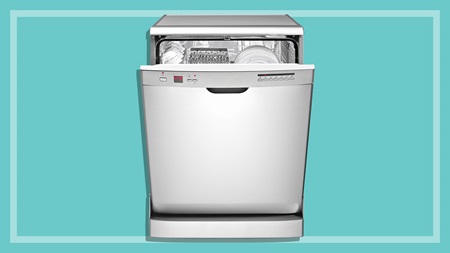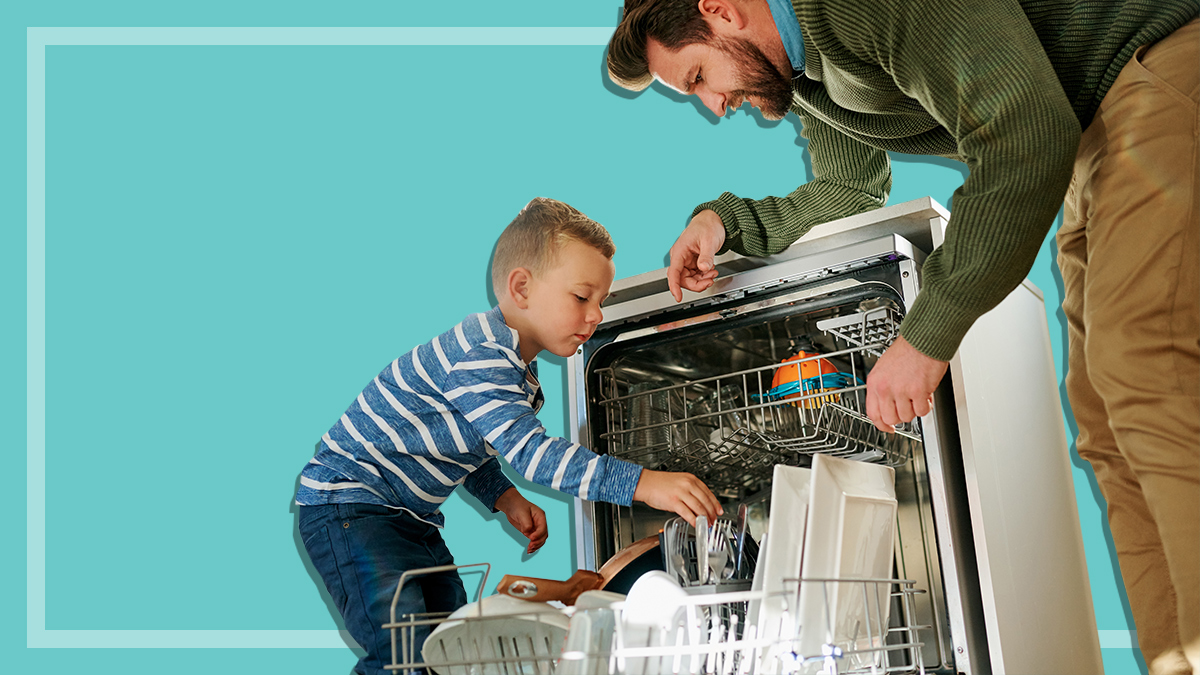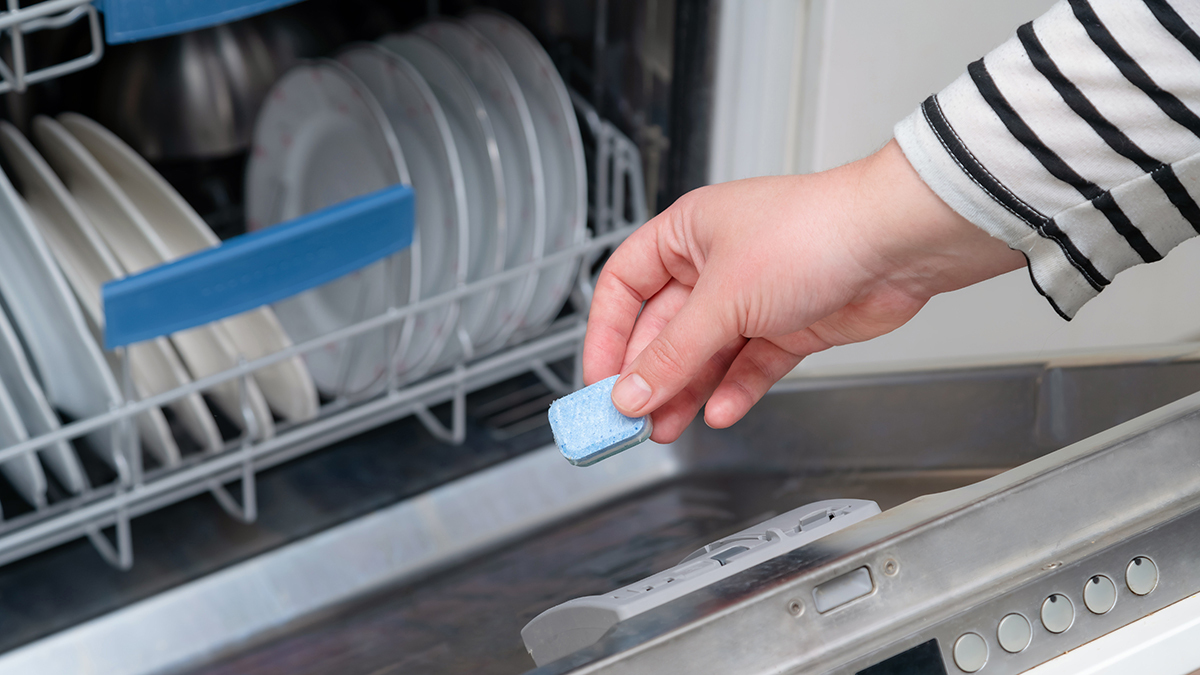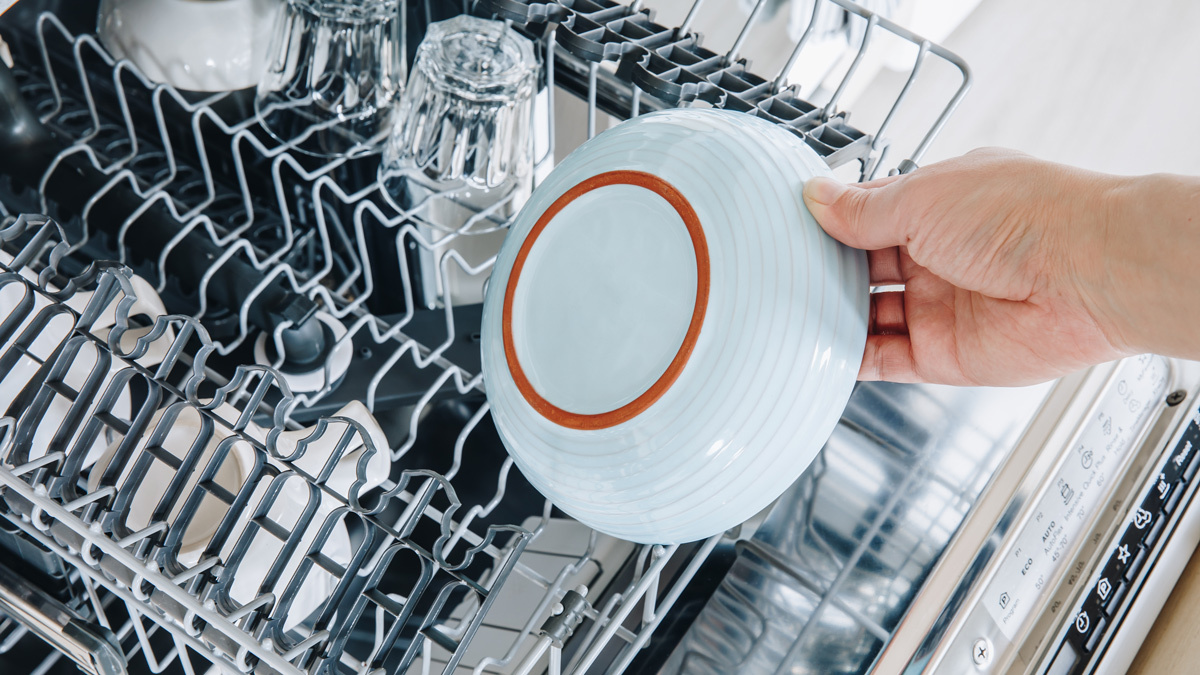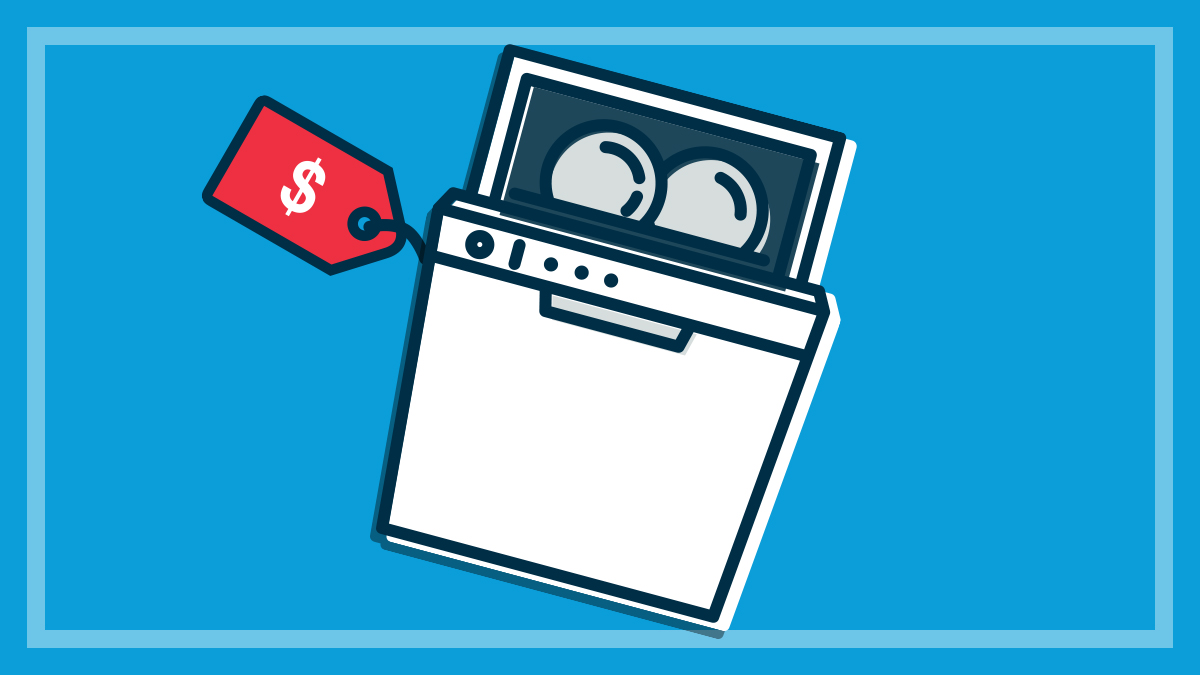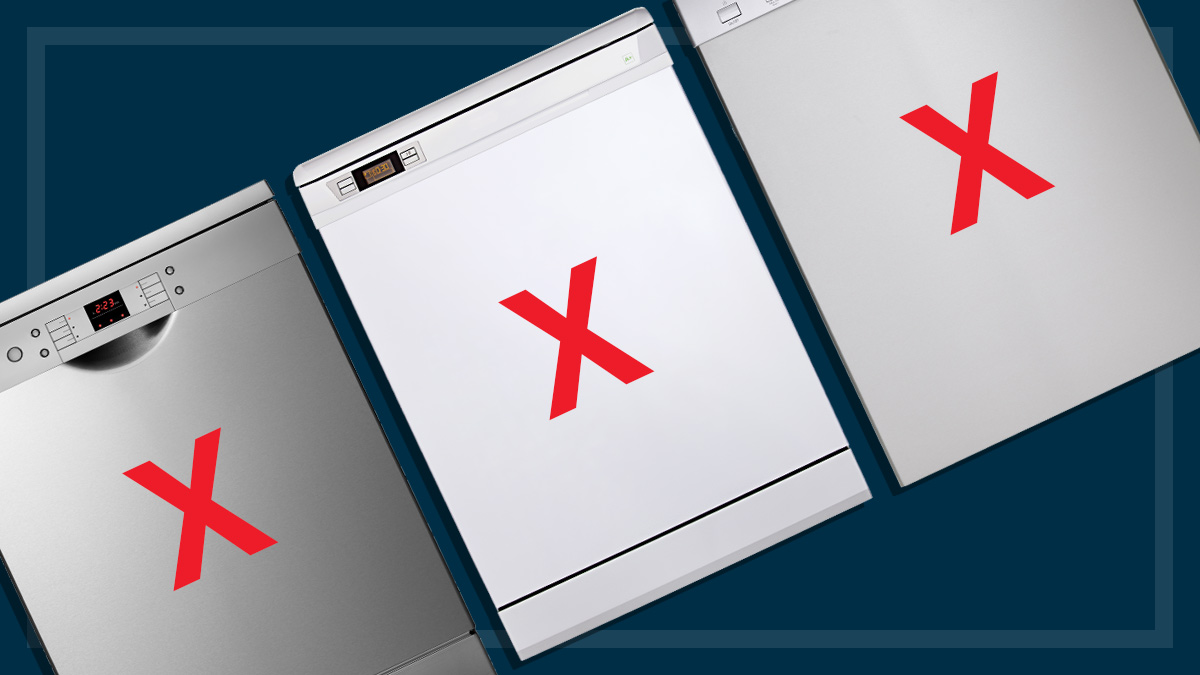Get our independent lab tests, expert reviews and honest advice.
How we test dishwashers
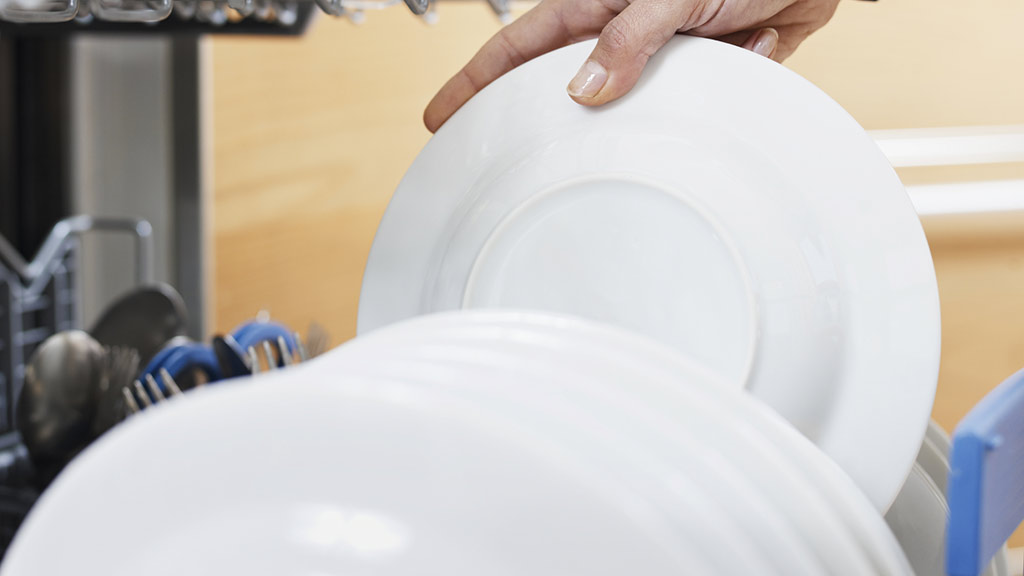
Dishwashers have been coming through our labs on a regular basis for many years now. After more than 60 years we’ve got the testing down to a fine art with many of our testers having over a decade’s testing experience.
On this page:
- Our expert testers
- How we choose which dishwashers to test
- How often we test dishwashers
- How we test dishwashers
- Test criteria explained
- Our test lab
We assess how well the dishwashers can remove a selection of foods using a test method that’s based partly on the current Australian Standard and partly on the International Electrotechnical Commission (IEC) Draft Standard.
But whatever our experience may be, it’s you – our members – that guide how we test. Every few years, we send out surveys asking what you put in your dishwasher load, which programs you run, and which features you think you need. That’s why we include items like salad bowls and saucepans which aren’t in the Australian Standard, because they ARE in your dishwasher at home.
Likewise, we include a lot more plastics, because that really challenges a dishwasher’s drying capabilities. It’s also why our test method changes every once in a while – because you’ve changed your habits.
Our expert testers
With their 30-plus years’ combined experience in the dishwasher laboratory, we’re proud of our expert testers. They’ve seen all kinds of features and builds of dishwasher come through the labs, but one thing never changes – they need to get crockery and cutlery clean! We focus on the basics so that when it’s time to buy, you can be sure they work well.
On top of this, many of our testers sit on standards committees, both national and international, so we keep up to date with how labs and manufacturers are changing the standards, and also give consumers a voice in this forum, where sometimes only government and industry are represented.
How we choose which dishwashers to test
Why do we choose one dishwasher over another? There are several reasons, but our priority is to test what you’ll see in shops.
That means that sometimes we might not cover a brand that’s only sold a few dishwashers in Australia, and instead focus on the big names that you’ll most likely see in the retailers, so we can provide the most relevant information to the greatest number of people.
How do we know what’s in retailers? We check market figures to see what’s selling well. We’ll also include models that you’ve requested – if a lot of members want it, we’re going to test it.
When we know what you want, our buyers go out and use your member funds to buy the dishwashers anonymously from a variety of retailers, then bring them in as-is – this means we get what you’d get, so we can be sure the results are what you’ll find, and not ‘tweaked’ in any way.
How often we test dishwashers
Along with washing machines, we test dishwashers every four to six weeks, and we tend to test in small batches. We do this because manufacturers are constantly releasing new models. We’ve seen some manufacturers keep a model in the market for a few months, and others for six years.
So the turnover for some is quite frequent, while others are happy to have their products in the market for a long time. Brands that have been in the market for a long time tend to release less frequently. Newer brands seem to be releasing more frequently, perhaps looking for the best combination of features.
How we test dishwashers
We don’t just use any old crockery and cutlery for our dishwasher tests. We load them based on a modified IEC Draft Standard, which resembles what you’re likely to put into your own dishwasher at home.
Our testers check how well the dishwashers tackle a full load of dirty dishes by measuring out and placing equal amounts of steam-baked oats, egg yolk, spinach, baby cereal, butter, tomato juice and tea on our standardised set of crockery. They also put egg yolk onto cutlery. Each of these ‘soils’ tests different aspects of the dishwasher’s performance.
We assess how well the dishwashers can remove foods such as oats, egg yolk, butter, tomato juice and tea stains that have been dried overnight
It’s all then left to dry for 15–18 hours before being loaded into the dishwashers, washed (using the sensor wash if the dishwasher has one, or a normal cycle if it doesn’t) and dried.
The testers use the dishwasher detergent specified in the Australian Standard, which actually does a bad job as a detergent, but it’s very consistent and we’re testing the machines, not the detergent.
Each dishwasher is tested at least twice and the scores are averaged. Testers also measure the energy and volume of water used in a cycle.
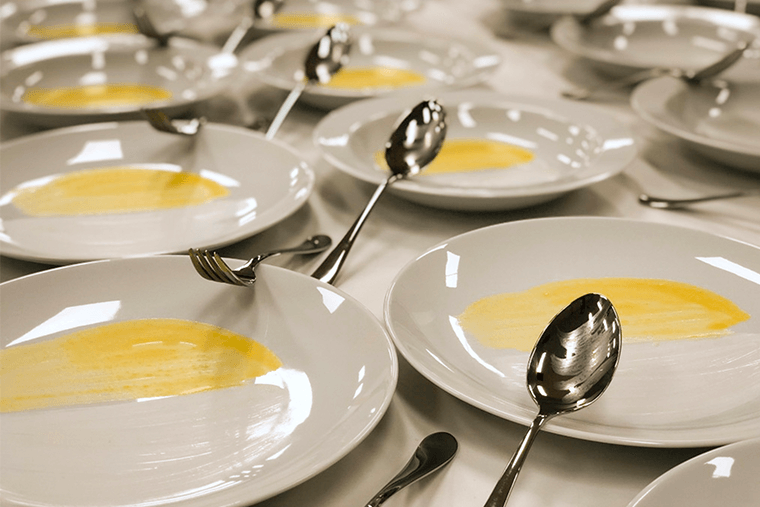
Test program selection
If a dishwasher has an auto program, we select it over the normal program. We do this because an auto or sensing program should be designed to give optimum results for every wash. You’re probably also paying extra money for this feature, so entry level models won’t necessarily have it.
If there isn’t an auto program, we test on the normal program, as this is what our members tell us they use the most. (For more about program options and features, see our dishwasher buying guide).
Why do CHOICE results often differ to those on energy and water labels?
For the mandatory energy and water labels (the star rating stickers on the machines), the test can be done on any program nominated by the manufacturer as long as it’s stated in the product literature that it’s designed to wash a normally soiled load at rated capacity.
We’ve found the program manufacturers use for registration testing often isn’t the same program you’ll be using in your own kitchen. The registration test is also conducted using the Australian Standard load (not the IEC load), which we’ve found is not particularly relevant.
We test based on how our members use their dishwashers at home (the normal or auto program), to get real-world results.
Test criteria explained
The CHOICE Expert Rating, the overall score that determines which products we recommend, is a combination of the washing, drying and energy efficiency scores for the normal or auto/sensor wash program, weighted as follows:
- washing performance (65%)
- drying performance (25%)
- energy efficiency (10%).
Washing performance
We assess how well the dishwashers can remove foods such as oats, spinach, egg yolk, baby cereal, butter, tomato juice and tea stains that have been dried overnight, and without being rinsed first. Our test is based partly on the current Australian Standard and partly on the IEC Draft Standard.
Drying performance
This score reflects how dry the dishes are 30 minutes after the normal cycle finished. During this time the doors are left closed, unless the dishwasher has an automatic door opening function that is activated at the end of the program.
2024 change to methodology
In 2024 we adapted the method to incorporate the drying into the soiled testing as well, whereas previously it was a separate run. This results in marginal differences, but we felt it prudent to separate out the results into 2023 and prior results and 2024+ results which we incorporated as a filter on the dishwasher test page.
Energy efficiency
This is based on the amount of energy used per place setting by the dishwasher on the tested program. The less energy used, the higher (better) the score.
Noise level
These are the maximum noise levels recorded during the normal program, measured one metre away from the dishwasher and one metre above the ground. You’d be aware of all these dishwashers running in the background.
Reliability and Longevity
We’re often asked why we don’t score products on their durability, or how long they last. The reason? Durability testing is a very long and costly process, and by the time we got results for a given model, it probably wouldn’t be on the market anymore.
Instead, we survey our members, asking whether they’ve had any problems with their dishwashers, and whether they’d buy the same brand again. To see which brands fare best, check the reliability and loyalty scores in the comparison table of our dishwasher reviews.
Our test lab
We maintain a laboratory that is up to date with the latest reference machines and calibrated measurement tools for our testers to bring you the right results. Everything in our laboratory is tightly controlled, including temperature, humidity, water temperature and even water hardness, to ensure each machine is tested under exactly the same conditions.

